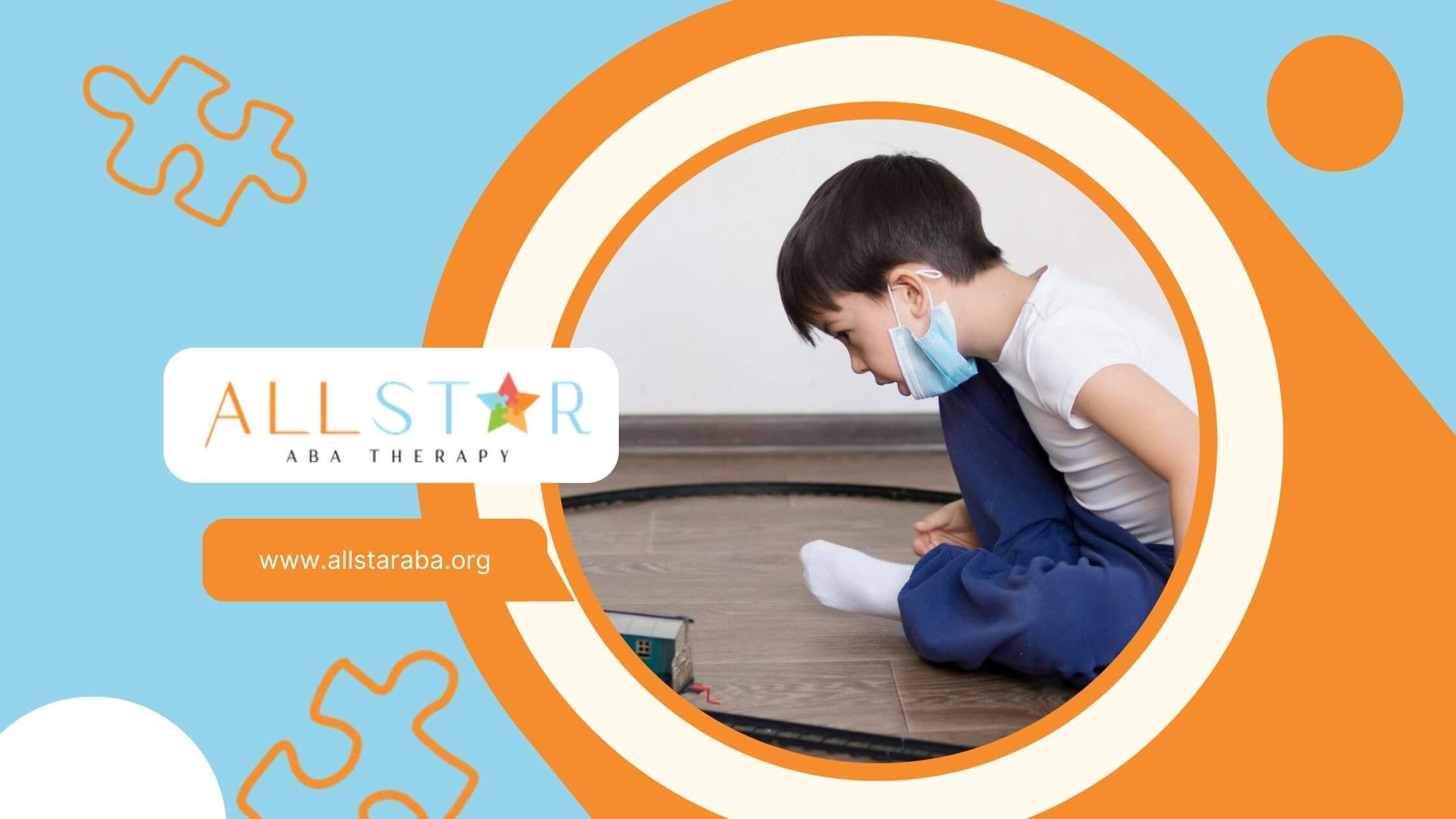New Paragraph
Enhancing RBT Client Interaction for Positive Outcomes
Understanding BCBA and RBT Roles
To ensure effective client interaction and positive outcomes in therapy, it is important to understand the roles of Board Certified Behavior Analysts (BCBAs) and Registered Behavior Technicians (RBTs) in the field of applied behavior analysis (ABA).
Overview of BCBA Responsibilities
BCBAs play a crucial role in the ABA field, overseeing and guiding the behavior intervention process. Their responsibilities encompass various aspects, including assessment, treatment planning, and supervision. Some key responsibilities of BCBAs include:
- Conducting assessments: BCBAs are responsible for conducting comprehensive assessments to evaluate the client's behavior, skills, and needs. These assessments help in developing appropriate behavior intervention plans.
- Designing behavior intervention plans: Based on the assessment results, BCBAs design behavior intervention plans tailored to the individual client's needs. These plans outline specific strategies and techniques to address challenging behaviors and promote skill development.
- Supervising RBTs and other team members: BCBAs provide ongoing supervision to RBTs and other team members involved in implementing behavior intervention plans. This supervision ensures that interventions are implemented correctly and consistently. Regular supervision sessions help address any challenges, provide feedback, and support professional growth.
- Collaborating with other professionals: BCBAs work collaboratively with other professionals, such as psychologists, educators, and speech-language pathologists, to ensure comprehensive and coordinated care for clients. This collaboration helps in integrating behavioral interventions with other therapeutic approaches.
Key Responsibilities of RBTs
RBTs play an integral role in the direct implementation of behavior intervention plans under the supervision of BCBAs. They work closely with clients, providing one-on-one support and assisting in skill acquisition and behavior management. Some key responsibilities of RBTs include:
- Implementing behavior intervention plans: RBTs directly implement the behavior intervention plans designed by BCBAs. This involves conducting therapy sessions, following specific protocols, and providing consistent support to clients.
- Collecting data: RBTs are responsible for collecting accurate and objective data during therapy sessions. This data helps BCBAs assess the effectiveness of interventions and make data-driven decisions regarding treatment modifications.
- Providing feedback: RBTs observe and provide feedback to BCBAs regarding the client's progress, challenges, and any potential barriers to treatment. Their observations and insights contribute to the ongoing assessment and modification of the behavior intervention plans.
- Maintaining documentation: RBTs maintain detailed records of the therapy sessions, including data collection sheets, progress notes, and incident reports. This documentation ensures accurate tracking of client progress and compliance with ethical and legal requirements.
By understanding the distinct roles and responsibilities of BCBAs and RBTs, it becomes evident that effective collaboration and communication between these professionals are essential for achieving positive outcomes in therapy. This synergy allows for the implementation of evidence-based interventions and the customization of treatment plans to meet the unique needs of each client.
Importance of Therapeutic Relationships
Establishing strong therapeutic relationships is essential in the field of applied behavior analysis (ABA) to ensure positive outcomes for clients. The value of empathy and compassion, as well as the impact of relationship skills on clinical outcomes, cannot be overstated.
Value of Empathy and Compassion
In the context of ABA, empathy and compassion play a crucial role in forming meaningful connections with clients. Research has shown that therapeutic relationship skills, including empathy and compassion, are highly valued in healthcare industries and have been correlated with patient satisfaction, treatment adherence, and improved clinical outcomes.
Behavior analysts often face ethics complaints, with a significant number of these complaints related to deficient relationship skills rather than technical skills. It is essential for behavior analysts, particularly Registered Behavior Technicians (RBTs), to cultivate empathy and compassion throughout their interactions with clients. These qualities contribute to a positive therapeutic environment and enhance the overall client experience.
Impact of Relationship Skills on Clinical Outcomes
The relationship between the therapist and the client is a significant factor in the success of ABA therapy. Building rapport, also known as pairing, with clients is crucial for establishing trust and creating a positive therapeutic environment. Pairing involves actively engaging in activities that the client is focused on, allowing the therapist to develop a connection based on shared enjoyment and mutual engagement.
Effective engagement in relationship-building skills has been shown to be instrumental in reducing problem behavior and maximizing the effectiveness of ABA therapy sessions. ABA therapists should follow the client's lead, observe preferences, bring preferred toys, and engage in activities that resonate with the client. This approach helps to establish trust and allows for smoother transitions into teaching new skills and addressing challenging behaviors.
By prioritizing empathy, compassion, and relationship-building skills, behavior analysts, including RBTs, can foster strong therapeutic relationships that contribute to positive clinical outcomes. These qualities enable them to provide the necessary support and guidance to clients on their autism journey. To learn more about the responsibilities and challenges faced by RBTs, refer to our article on RBT job responsibilities. For an overview of the ethical considerations in ABA, visit our article on BCBA ethical responsibilities.
Enhancing RBT Training Programs
To ensure effective client interaction and positive outcomes, it is crucial to enhance RBT training programs. Customization and tailoring of training content are two key strategies that can significantly improve the effectiveness of RBT training.
Customization of Training Programs
Customizing RBT training programs involves assessing the specific needs of trainees. This can be done through interviews, surveys, and observations, allowing trainers to understand the trainees' strengths, areas for improvement, and unique learning styles. By gathering this information, training programs can be targeted and tailored to meet the individual needs of each trainee.
Through customization, trainers can focus on specific behavioral interventions, assessment methods, or ethical considerations that are most relevant to the trainees' target population. This ensures that trainees receive training that is directly applicable to their work and helps bridge the gap between theory and practice.
Incorporating real-world case examples and scenarios relevant to the trainees' target population is another effective way to enhance the practicality of RBT training\. By using relatable examples, trainees can better understand how to apply the concepts they learn in training to real-world client situations.
Tailoring Content for Effective Training
Tailoring the content of RBT training programs involves selecting and prioritizing relevant topics based on the assessed needs of the trainees. By focusing on specific areas that require improvement or additional support, trainers can ensure that trainees receive the most relevant and impactful training.
In addition to selecting relevant topics, it is important to consider the instructional methods and materials used in the training. To enhance effectiveness, trainers can incorporate a variety of teaching strategies such as visual aids, demonstrations, and interactive activities. This allows for different learning styles to be accommodated and increases engagement and retention of information.
To ensure ongoing improvement, customized RBT training programs should include regular check-ins, case consultations, and observation sessions. This provides trainees with opportunities to discuss challenges they may be facing and receive tailored strategies and feedback from experienced professionals. Continuous clinical supervision and feedback contribute to the trainees' growth and development as effective RBTs.
Regular evaluation of the impact of customized RBT training programs is essential. Collecting trainee feedback on training materials, instructional methods, and program structure allows trainers to make necessary adjustments and improvements. This ensures that the training program remains responsive to the evolving needs of trainees and maintains its effectiveness over time.
By customizing and tailoring training programs, RBTs can receive the training they need to excel in their roles. This ultimately leads to enhanced client interaction and positive outcomes in their therapeutic work.
Challenges Faced by RBTs
Being an RBT comes with its unique set of challenges. Two significant challenges faced by RBTs are building rapport with clients and balancing clinical and clerical duties.
Building Rapport with Clients
Building a strong therapeutic relationship is crucial for effective ABA therapy. This process, also known as pairing, involves actively engaging in an activity that the child is focused on, creating a positive therapeutic environment prior to introducing nonpreferred or aversive components of therapy.
During the pairing process, RBTs should follow the client's lead, observe preferences, bring preferred toys, narrate play, and match the client's energy level. These actions help establish trust and comfort between the RBT and the client, laying a solid foundation for therapy sessions. Kelly et al. identified several essential skills for an ABA therapist when pairing with a new client, including proximity, praise, reflection, imitation, describing initiative, and creating new activities.
While building rapport, RBTs should prioritize patience and adaptability, especially during challenging moments. Staying patient and adaptable allows the client to feel more comfortable and trusting, ultimately enhancing the therapeutic relationship and promoting positive outcomes.
Balancing Clinical and Clerical Duties
RBTs not only provide direct client care but also handle various clerical responsibilities. These duties may include documenting behavior plans, skill acquisition programs, and other session events. Balancing these clinical and clerical responsibilities can pose a challenge, particularly when faced with time constraints and increasing caseloads.
Effective time management is essential for RBTs to ensure they can fulfill their clinical duties while also completing necessary documentation and administrative tasks. Prioritization and organization skills are vital to optimize productivity and prevent burnout.
Furthermore, RBTs often find themselves running therapy sessions and managing tasks independently due to limited support from BCBA professionals. This lack of support can make it challenging for RBTs to seek help, feedback, or solutions when faced with complex situations or issues that may arise during therapy sessions.
To address these challenges, open communication and collaboration between RBTs and BCBA professionals are essential. Creating a supportive work environment where RBTs feel comfortable seeking guidance and assistance can greatly enhance their ability to navigate the demands of their role.
In conclusion, RBTs face challenges in building rapport with clients and balancing clinical and clerical duties. By focusing on building strong therapeutic relationships through pairing and practicing effective time management strategies, RBTs can overcome these challenges and provide quality care to their clients. Open communication and collaboration with BCBA professionals are also crucial for ongoing support and guidance.
Ethical Considerations in ABA
When working in Applied Behavior Analysis (ABA), ethical considerations play a crucial role in ensuring the well-being and rights of clients. This is especially important for Registered Behavior Technicians (RBTs), who provide direct therapy services under the supervision of Board Certified Behavior Analysts (BCBAs). In this section, we will explore some ethical dilemmas faced by RBTs and the importance of ensuring client safety and rights.
Ethical Dilemmas for RBTs
RBTs often encounter ethical situations in their work that require careful navigation while adhering to the BACB (Behavior Analyst Certification Board) Ethics Code. One common ethical dilemma faced by RBTs is abstaining from dual relationships. RBTs must maintain professional boundaries and avoid engaging in personal or nonprofessional relationships with their clients. This ensures that the focus remains on the therapeutic goals and objectives.
Another ethical dilemma for RBTs involves respecting clients' comfort levels. Each client has their own preferences and sensitivities, and RBTs must ensure that therapy programs and interventions do not infringe upon their clients' rights or make them feel uncomfortable. This requires ongoing communication, active listening, and a commitment to providing a safe and supportive therapeutic environment.
Ensuring Client Safety and Rights
The safety and rights of clients are of utmost importance in the field of ABA. RBTs have a responsibility to ensure that clients are protected from harm and that their rights are respected throughout the therapeutic process. This includes:
- Physical Safety: RBTs must take appropriate precautions to ensure the physical safety of their clients during therapy sessions. This may involve implementing safety protocols, such as removing hazardous objects or modifying the environment to prevent accidents.
- Emotional Safety: RBTs must create a nurturing and supportive environment where clients feel emotionally safe. This includes using positive reinforcement, providing clear and consistent expectations, and avoiding any practices that may cause undue distress or harm.
- Client Rights: RBTs must uphold their clients' rights, such as privacy and confidentiality. They should only share client information with authorized individuals and obtain informed consent before sharing any personal or sensitive information.
Adhering to ethical guidelines and maintaining a strong commitment to client safety and rights is essential for RBTs. This ensures that therapy is delivered in a professional, ethical, and responsible manner.
In addition to ethical considerations, RBTs also face challenges in building rapport with clients and balancing clinical and clerical duties. Navigating these challenges requires effective communication, time management skills, and ongoing professional development. To learn more about these challenges, refer to the respective sections in this article.
By understanding and addressing ethical dilemmas, RBTs can contribute to positive and impactful client outcomes while upholding the highest standards of professional conduct in the field of ABA.
Achieving Work-Life Balance
Maintaining a healthy work-life balance is essential for the well-being and longevity of Registered Behavior Technicians (RBTs) in the field of Applied Behavior Analysis (ABA). The demands of the job can be physically, mentally, and emotionally taxing, making self-care a crucial aspect of an RBT's professional journey. In this section, we will explore the significance of self-care for RBTs and the challenges they face in setting boundaries between work and personal life.
Self-Care for RBTs
RBTs frequently find it challenging to achieve a work-life balance, often necessitating intentional efforts to prevent burnout. The nature of the job can lead RBTs to bring work home, such as completing paperwork off the clock and preparing necessary materials for sessions outside of working hours. This can blur the lines between work and personal life, making it crucial for RBTs to prioritize self-care.
Self-care for RBTs involves taking deliberate steps to recharge and rejuvenate, both physically and mentally. This can include engaging in activities that promote relaxation, practicing mindfulness or meditation, pursuing hobbies, and fostering social connections outside of work. By dedicating time to self-care, RBTs can replenish their energy, reduce stress levels, and enhance their overall well-being.
Challenges of Setting Boundaries
Establishing a work-life balance in the field of ABA can be particularly challenging. RBTs encounter daily stressors and the need for flexibility in their schedules, often leading to difficulties in setting clear boundaries between work and personal life. Feedback received in ABA is frequent and necessary for professional development, but it can be hard for individuals not to take it personally.
To address these challenges, RBTs can implement strategies to create boundaries that protect their personal time and well-being. This may involve setting specific work hours and sticking to them, communicating their boundaries to supervisors and colleagues, and creating designated spaces for work-related activities. By setting and maintaining boundaries, RBTs can carve out time for themselves, their families, and their personal interests.
Internalizing the importance of self-care and boundary-setting is crucial for RBTs to thrive both professionally and personally. Prioritizing self-care activities and establishing firm boundaries can contribute to a healthier work-life balance, reducing the risk of burnout and promoting overall job satisfaction.
To explore the responsibilities and challenges faced by RBTs and BCBA clinicians further, refer to our articles on RBT job responsibilities and BCBA ethical responsibilities. Additionally, understanding the differences in duties between BCBAs and RBTs can provide valuable insights into the dynamics of their roles - check out our article on BCBA vs RBT duties.
Need Support?
We're Here to Help!
Our experienced team is ready to assist you. Reach out today to discuss how we can support your child's development and well-being.
Get started with expert ABA therapy today.








